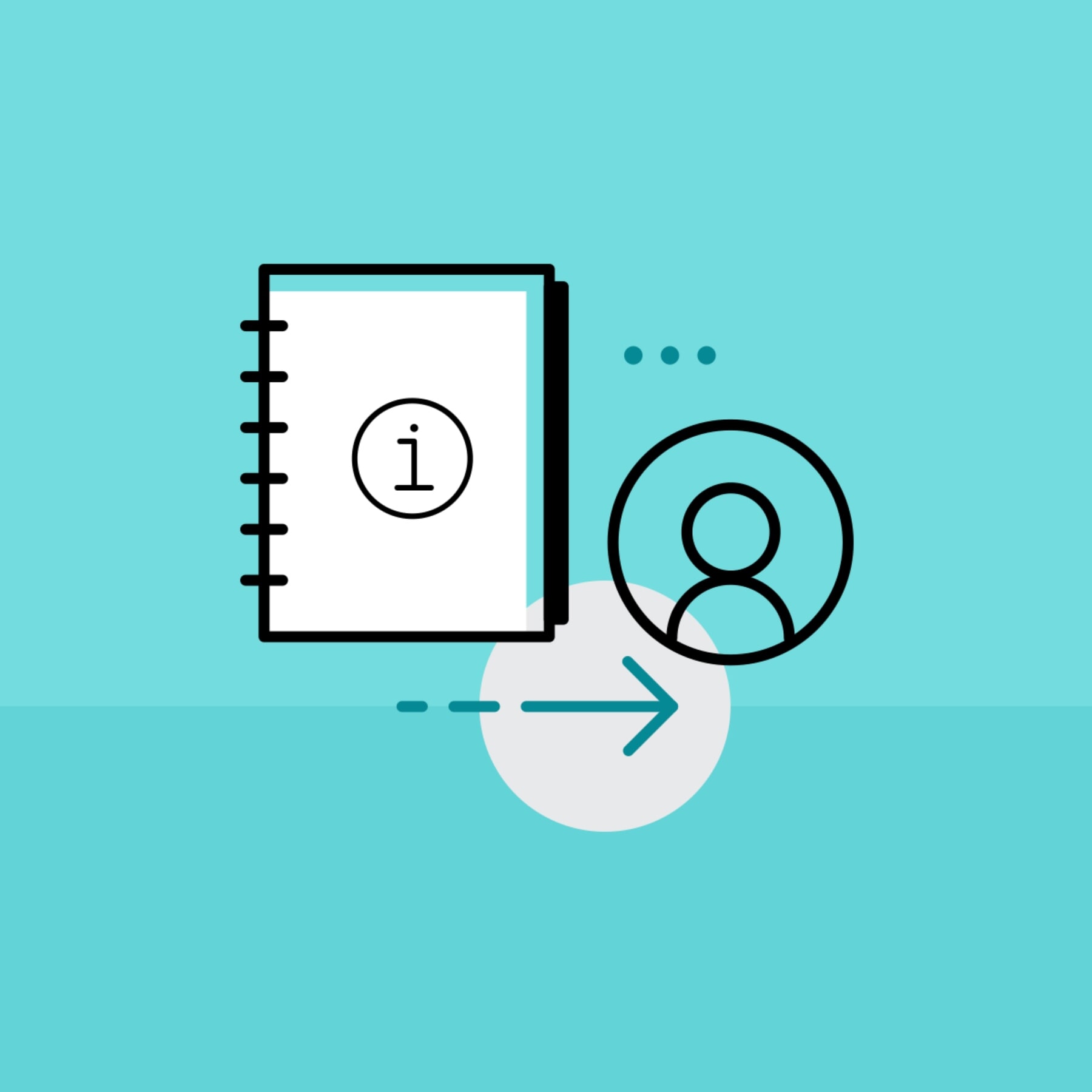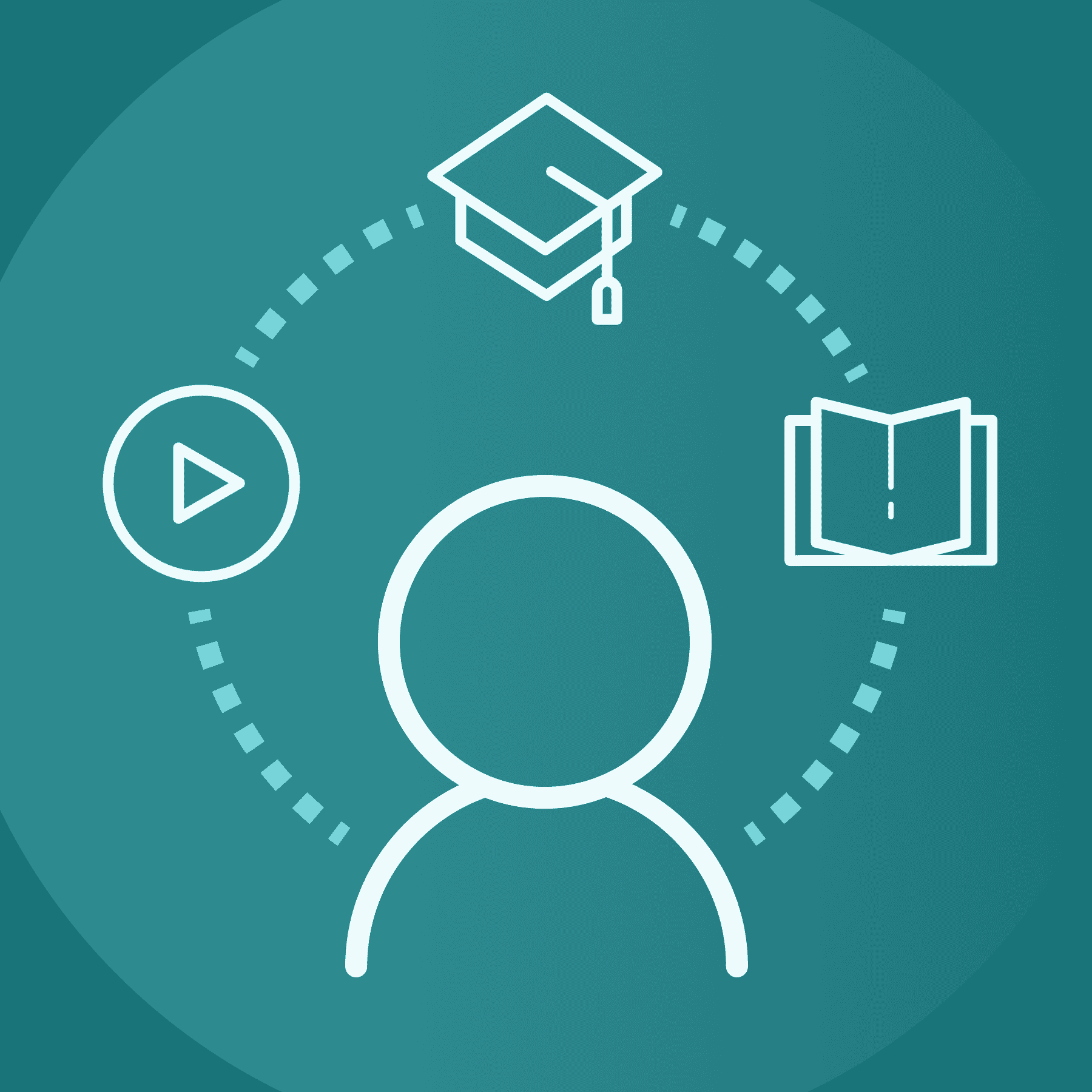This guest post was written by Andrea Maliska, award-winning learning and development professional with over twelve years of experience in the field. She has built several learning and development departments in a variety of industries and relishes the opportunity to build from the ground up. Andrea currently owns her own consulting company, Rebel Learn, located in Denver, Colorado. Combining her experience in L&D and Product Management, she approaches strategy and program design with a unique and thoughtful approach.
With the end of the pandemic on the horizon and the return (slowly but surely) back into the office, there are still some pretty big question marks about what that will look like for companies.
Will we ever get back to how it looked before? With a workforce that is potentially going to remain split between office and remote, we have a challenge as learning professionals. How do we create programs that are engaging and have high retention success online?
You’ve probably been hearing the term “blended learning” a lot because of this very challenge. Statements like “Our curriculum consists of a blended learning approach,” or “We believe in blended learning as the best way to keep <insert any audience name> engaged.” And maybe when you first heard it you thought “Awesome! That sounds cool!” but then quickly started wondering what that actually meant.
So, what is blended learning? Let’s talk through what it actually means, and I will give you several real-world examples of what a blended learning program can look like.
Before we start, however, it is important to understand the terminology around online learning.
Synchronous learning:
Synchronous learning is taken in a cohort and with a live instructor. This can also be referred to as live online training or virtual instructor-led training (vILT). You move through the online content by a schedule as you would if you were in the traditional learning environment, such as a classroom with a teacher.
Asynchronous learning:
Asynchronous learning means consuming eLearning completely self-paced. Ok, you say, but what is self-paced? With self-paced, asynchronous eLearning, you are accessing the online instruction on your own time at your own speed. This content is accessible 24 hours 7 days a week and you do not have scheduled class times or virtual meetings. Typically you take the course independently without a cohort or group of other students.
So blended learning can be, yep you guessed it, a blend of these types of learnings but also incorporate other aspects that don’t fit neatly into the above definitions.
For instance, I could have a blended course that has some fully self-paced (asynchronous) learning blended with the course being taken alongside other students (cohort) with office hours by a virtual teacher which has elements of it being synchronous. We can also add in social learning to this program and now we have completely broken out of that tidy definition I just gave above.
The beauty of blended learning is that you don’t have to fit into a box. This is where you get to push the bounds of what is considered “industry standard” or “the way we do things.” It is where you get to define your own learning program and take the elements from synchronous and asynchronous learning that you love and that work for your audience and BLEND them together.
This is where I, as an eLearning Strategist, get to really design and architect a program for the audience, no matter what was done before. It is where I love to exist and is normally where most learning designers find their creative juices pumping.
More on eLearning: What is instructional design?
Elements of Blended Learning
Blended learning can have several different elements. While I will cover a good list of elements that make up a blended program, the sky really is the limit. Or … the $$$ is the limit… but there are always new ideas and elements that can augment a blended learning experience. Here are a few:
Content
The main element of your courses? The content of the course. This content for a blended course could consist of interactive courses built with a rapid authoring tool like Articulate 360 or Lectora, videos of software demonstrations and walkthroughs, and live training.
Let’s take a closer look at these content types:
- Interactive Courses: If you have taken any online courses I am sure you know the content type -- courses you can click through with characters you follow through a story. Oftentimes, there is a concept introduced and then you have the ability to do a fun, interactive game, quiz or knowledge check. You can also interact with the screen by clicking on certain areas and additional info with the display. These tools allow you to branch the experience. Kind of like a “choose your own adventure” if the learner clicks on the circle, take them to this page. If the learner clicks on the square, take them to this other page.
- Videos: This can be either system videos or instructor videos, depending on the content. Often used in eLearning software, this is when you take screen recordings of your desktop, using a tool like Camtasia, and present the content in an edited, walkthrough style of the system. You can add in animations, callouts, spotlights and interactivity to the video with the right tools. You can also have videos of the instructors themselves walking through the concepts and using a wide range of instruction tools like whiteboards or Lightboards. And if you have the ability your videos can even be VR/AR content that even more deeply connects your learners to a real world experience without leaving their desks.
- ILT and vILT: These are courses taught by an instructor. ILT stands for Instructor Led Training and vILT is Virtual Instructor Led Training. So this content is delivered live in a traditional classroom or via webinar or live stream.
Hands on
Regardless of the type of learning or the learning preferences you are building for, there needs to be an element of application, an opportunity for the learners to apply the concepts they are being taught.
Elements that allow your learners to apply your learnings because no matter the learning preference there should always be an element of application.
- Office Hours: Set up weekly, bi weekly or monthly standing meetings for anyone to join if they have questions. Just like in college, the instructor is there for that hour time slot and able to answer any questions… only this is virtual via webinar.
- Working Sessions: These are virtual or in person sessions run by an instructor that allow the learner to apply the concepts they have learned. Normally centered around an activity or end goal it allows learning to cement with hands on application.
- Assessments: Quizzing, knowledge checks, tests or manager observations are different types of assessments often built into the platform or the content itself.
- Labs: Scenarios and long form exercises that allow students to apply a number of skills learned in a lab setting. Oftentimes, used in more technical courses where they access a virtual machine or environment and, using a lab workbook, step through a series of exercises to reach an end goal utilizing hands-on experience.
- On the Job (OTJ) Activities: When the learner gets the ability to apply learning in actual on the job scenarios.
Engagements
The problem with fully online learning? Keeping learners engaged with the program and content.
Here are some elements you can use to create a blended program that also engages your audience:
- Social Learning: Allows remote learners to interact with other individuals in their learning cohort or group. This can be via chat boards, discussion boards and messaging apps like Slack. They can ask questions, crowdsource solutions to labs and activities, share wins and challenges. You can even add in weekly engagement questions or reflections to add to the experience.
- Learner Sourced Content: When the learner is not just on the receiving end of content but also has a chance to share their own knowledge. This can be set up with specific SMEs in the organization being able to push in content, content needing to be approved by a moderator or completely open. This is a great way to source knowledge.
- Accountability Partners: Pairing learners up with others in their cohort to keep each other accountable with the learning, like built in study buddies and cheerleaders in one. Exercises can be designed specifically for accountability partners to do together. Great way to practice skills within a soft skills learning program.
- Weekly Challenges: Challenges that are above and beyond the normal curriculum that are set up for individuals to do on the job or in their personal lives. Normally lining up with the big concepts from the week or module, this allows learners to continually practice even when not in the program itself.
Real-World Examples of Blended Learning
So all these elements are great, but we really can’t get the full feel of what a blended learning program looks like without understanding how they all fit together.
As you can imagine, with the number of different elements available, Program A can look very different from Program B. This is why I love blended learning so much. It really takes the monotony out of learning. As I said before, this is a learning designer's chance to really be creative and provide the optimal experience for the audience. And that is how I look at program design, it should be a learning EXPERIENCE. So let’s walk through some examples of programs I have built that are great examples of blended learning:
The Bootcamp
Need: Provide a bootcamp style experience to a highly technical audience around a soft skill.
Audience: The audience is globally dispersed and because of their roles need to be able to complete the content in their off-hours which is few and far between. They have full-time jobs and this additional learning needs to be approachable and something they can incorporate into their already busy lives.
Approach: Highly self-paced learning around the concepts with opportunities to apply those concepts to their everyday lives, whether it be personal or professional. Sprinkle in opportunities to interact with their cohort daily if desired and meet weekly for an hour with the instructor and cohort.
The Building Blocks: The elements we used for this program were micro-videos of the instructor delivering the concepts in very bite-sized pieces. Short 2-5 minutes videos. The videos are accompanied by some type of application exercise. Either an OTJ activity (see above), a challenge, a reflection, an exercise, etc to allow them to practice and apply the concept in their day-to-day.
This program is Synchronous in that they are learning with a cohort on a schedule each week but Asynchronous in the fact that they are doing some of the learning self-paced. We also set up a social learning ecosystem: They are partnered with others in the groups and have activities based around the weekly learnings that they need to do with their partners.
After all, a soft skill needs to be practiced in real-life situations with other humans. That is not really something you can quiz to mastery. On top of that we set up a Slack element where they are able to reach out in different channels to ask questions, discuss learning and development challenges, share breakthroughs and further engage the learners with reflection questions.
Lastly, each week they join an hour-long session with the instructor where they talk through the week. That session has a very detailed structure depending on the week to bring the most value. And for those that could not attend it is recorded and added to the platform for each week so they can watch what they missed. All of this is accompanied by a workbook and additional resources to round out the program. The small bite-sized videos allow the learners to learn on their own time, and indigestible pieces, while the other parts are baked into their day-to-day so it does not feel so daunting.
The Onboarding Program
Need: Take an ILT training process and move it to fully remote learning to onboard k-12 school nurses onto a telehealth platform.
Audience: Blend of technical and nontechnical individuals dispersed nationally that will be learning a new process and new technology. In a lot of circumstances, the move to telehealth is county sanctioned so they are not a part of the decision-making process and in some cases are against it. Put that on top of this training normally being in person and there can be several friction points.
Approach: Take the fear out of moving a fully in-person training to a learning platform for all onboarding. This means making the virtual learning experience approachable, easy, and fun with the need for several touchpoints with the implementation specialist along the way.
The Building Blocks: We architected a story-centered curriculum that brought real-world scenarios to life in video format. These videos were bite-sized and targeted to singular topics while also having exercises and opportunities to practice throughout.
The program opened up with a training kickoff zoom call where the Implementation Specialist sets expectations, explains the process and introduces the platform. The learners then spent the week digesting the videos and completing small checks on learnings asynchronously before getting into a practical virtual session with the Implementation Specialist at the end of the week to review outstanding questions, walkthrough scenarios, practice processes and procedures, and certify that the teams were ready to go live within the school.
The platform was configured with minimal clicks as a requirement to make navigating and finding course content easy. Login> land on a courses dashboard> your courses are right there, auto-enrolled, for you to start, continue, and review. Follow-up virtual sessions a few weeks into being live are also available and support is always available at the click of a button in the platform for any immediate issues or questions.
Benefits
The main benefit of blended learning would have to be the flexibility. I have touched on it a couple of times but this truly gives the designer the freedom to build for all aspects of the audience. I think it is worth a quick statement on how this type of learning is beneficial to learners and instructors alike.
For instructors, it allows them to put the content they teach over and over into a scalable and repeatable eLearning course or video freeing up time for them to concentrate on where the real learning takes place -- in the working sessions, labs and virtual sessions. It is here that they can really apply the learning.
In these circumstances, blended learning can even be a fully instructor-led course with “pre-learning” included. So, before an instructor gets into a class they are able to provide the concepts in video format on a platform where the learners walk through that content self-paced (before class of course!) and then when they get into the classroom they are able to dive in deeper to those concepts as a group and create more space for application.
For learners, it gives them the freedom to learn at their own time and pace but also still have the ability to have interactions with the instructors and students. One of the biggest negatives I have seen with fully self-paced content is that it has taken the humanity out of learning. No instructors, no classmates, just some computer-created courses you have to click through, play games and take quizzes that don’t really scratch the surface on learning and education. Humans learn from and with other humans so this gives learners the opportunity to learn from anywhere and still have those human elements and that connection that so many love about in-person courses.
Last but not least, this does have benefits for the companies/schools as well. While it may seem like a lot upfront to set up this type of learning, once it is there it is very scalable and accessible to anyone that wants to join. No barriers on proximity. The world has become your virtual learning oyster.
Closing Thoughts
A really well architected blended learning program can provide an integrated learning experience that is far more valuable than a fully online or fully in-person course. It can make the learning more approachable to a wider range of people and keep engagement, and in turn retention, higher throughout the learning process and program.
And that, at the end of the day, is the true goal of any learning program. Provide highly valuable experiences where the learners take away and cement those learnings before that forgetting gap takes it away. So hopefully what started out as “awesome! That sounds cool!!!” is now a rush of ideas on how you will be adding some of these elements to transform your programs into blended learning. Take advantage of the technology for your blended learning journey using eLearning tools and training manual software to create an effective training materials. For inquiries, don't hesitate to connect with us today!










